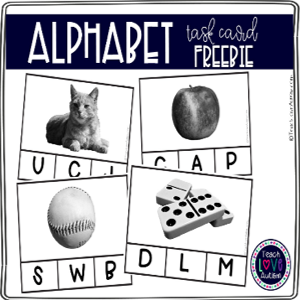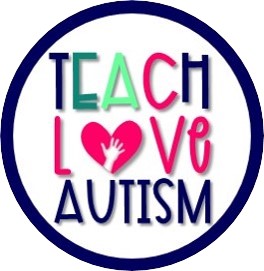Independent Work Tasks in the Classroom
Sharing is caring!
It is no secret that I love independent work tasks in the classroom! I love creating them, using them, teaching how to use them, and watching my students go from dependent to independent! There are a lot of teachers out there that want to implement a work task system into their classroom but have NO idea where to start. Some of my lowest and my highest functioning students can build that independent stamina.
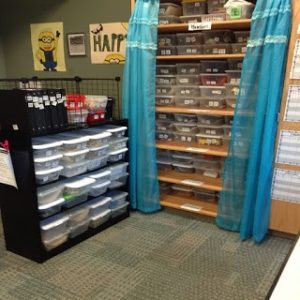
WHAT DO I NEED FOR Independent Work Tasks in the classroom?
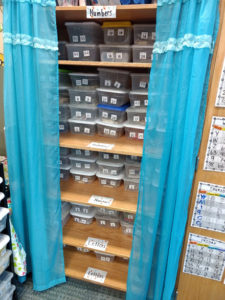
The best thing you can do is start small and remember that everything takes time.
Here is a list of materials that I would suggest you start with for the basic setup for independent work tasks:
-10 Clear shoe box sized containers
-Velcro dots and Strips
-Open Shelf or 3 drawer bin
-a desk or table
-a set of symbols to attach to boxes (numbers, letters, pictures) Grab those HERE!
WHEN DO I TEACH THE PROCESS?
I teach this at the very beginning of the year, but if you aren’t reading this at that time of year then anytime is a good time. My students in a whole group lesson where we go over what independence looks like. You should always model (act as the student) and walk them through the entire process of completing the task. This usually is a lesson I do multiple times over and over again for at least a week depending on the students. At the primary level you may need to do it longer and if you have one student that just isn’t getting it then perhaps doing an on one lesson would be helpful too.
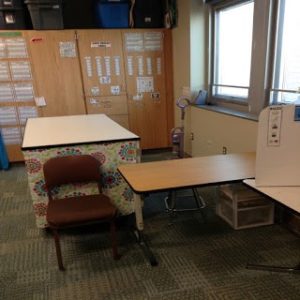
This includes showing the students sitting at the area where they will work, picking up the label, walk it to the area where the work tasks are, matching the label, grabbing the box, and bringing it to the table, then sitting at the table and completing the task. Then I also show where to put the box when it’s complete and how to move onto the next task. I try not to assume that my students (and sometimes my staff) know ANYTHING about this process. It is so much easier to teach it this way first, then have to go back and redo it.
We actually practice this at first with NOTHING in the bins and go through the motions of all those steps first, and I work on determining what my students can do independently before filling the bins with anything.
HOW DO I KNOW STUDENTS CAN DO THINGS INDEPENDENTLY?
The best way to know if a student can do something independently is to have them try it. I don’t like to assume that a student can do a task even if they have done one similar before. I will usually have them do it with me in a one-on-one situation or have a paraprofessional do it with a student and take notes.
At the beginning of the school year, I find it easiest to have all my students sit at a table and have a stack of 10-20 bins and hand the students bins and take notes on if they can do it or not, I have my paras take notes and we can all put eyes on the students at the same time. If you are in the middle of the school year and have stations already set up, I don’t suggest messing with your student’s schedule, just work with them one on one.
WHAT DO YOU HAVE YOUR LOWEST STUDENTS DO FOR TASKS?
This question I get asked all the time and my best answer are to use Put-In tasks. You can read a blog post that I wrote about them here: Put-In Tasks for ANY Classroom
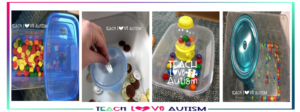
WHAT IF MY STUDENTS CAN’T WORK INDEPENDENTLY?
Some of your students just cannot work by themselves that is OKAY! You will get there and now you have found a great goal for your students to work on. I will then have my paraprofessional do two different things.
If the student can’t sit by themselves and can’t do the task then it becomes some of the work that my para does with that student during their 1:1 instruction time. I have it built into the schedule that every student works with every para in my room 1:1 at least once a day.
If the student can sit by themselves then I have the para use most to least prompting to build their independence while working at their seat. We take data via. a task-analysis sheet (more on that in the next question) and we try to look for progress in using less prompting over time until the student becomes independent. The goal is eventually the para doesn’t need to be there. Here is an example of a prompting chart that is all over my classroom for my paras to reference!
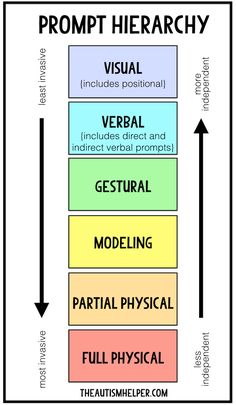
HOW DO I MAKE THIS A PART OF MY STUDENT’S IEP?
We create a goal for it! I know that we all have different expectations for IEP goals. I have found that many districts want behavior goals and this is a great way to target “on-task behavior” in the classroom. So I will use it as a behavior goal, functional independence, or life skills goal. Here are some suggestions for goals that I like:
- The student will work independently on a previously mastered task for 20 minutes with only 1 adult prompt and engage in only task-related behaviors on 5 consecutive days.
- The student will build their functional independence by completing an independent work task
- During an independent work time, Student will increase their independent work time to _____ by completing one task with one or less adult prompts 3 out of 5 opportunities to do so.
DO YOU TAKE DATA ON THIS?
Of course! Especially if it is for an IEP goal but, even if not, it is great information and such crucial skills for students to learn. I often will create a task-analysis of the work task process as I described above. If I just want data on one task I create a task analysis on just the parts of that task specifically. Here are some ideas for that from my friend Erin at You-Aut-a-Know. She also does a great job of giving you information on what task-analysis is.
Where can I get independent work tasks in the classroom?
Here are some materials that I have that filled my task boxes for my students to work on. If you click on the images below it will take you to the products to learn more!
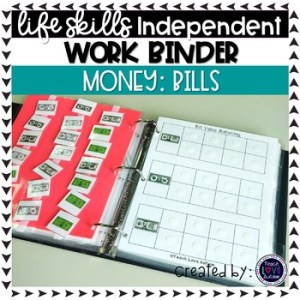

Where Can I get some Free Items to Start?
I know we all don’t have a wallet the size of Texas! We wish we could get all the items to work with all the students in our classroom. It can be hard just starting out and not knowing what to use. I have created some freebies that you can access by signing up below and get them in your inbox today! Also, I send out weekly emails with more work task ideas called “Work Task of the Week” and many are using simple items you might have around your classroom already!
[convertkit form=1035997]
What do I use to Setup this System? I need VISUALS!
I know you are thinking that this is all great information but, you just don’t have the time to make all the labels and visuals to make sure your students are doing the tasks independently! Well, I have got you covered! This kit has all the visuals you need to get it set up!
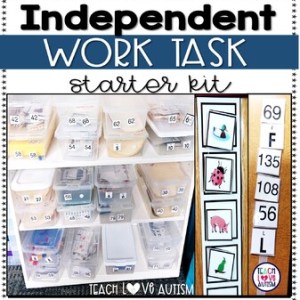
Independent Work Task Starter Kit
Where Can I find the Materials you Shared in the Pictures?
I have compiled a list of items in my Amazon Shop to help you get started. The category is called Work Task Materials. Please know that I do make a small commission off any items that you purchase through my shop, which is greatly appreciated!


